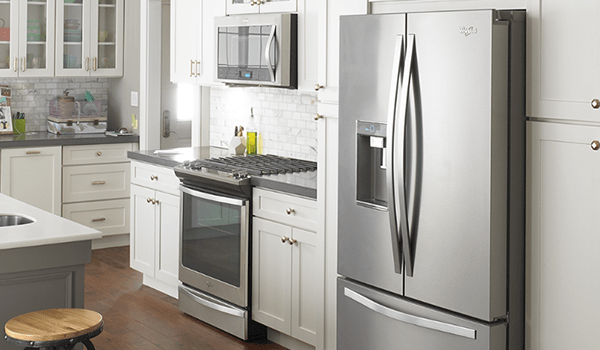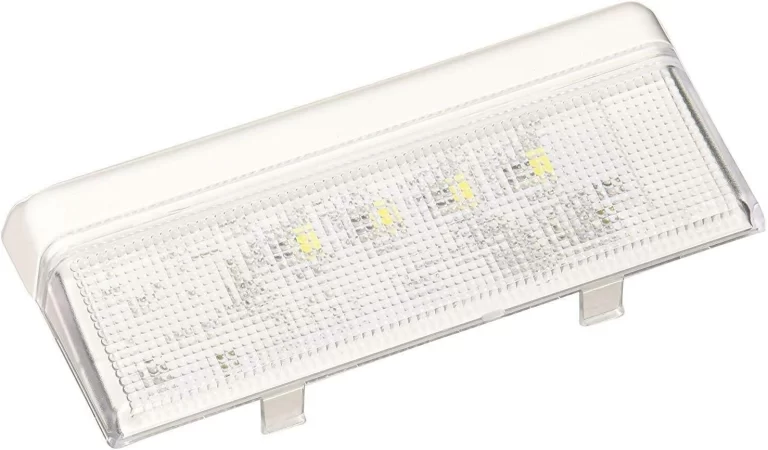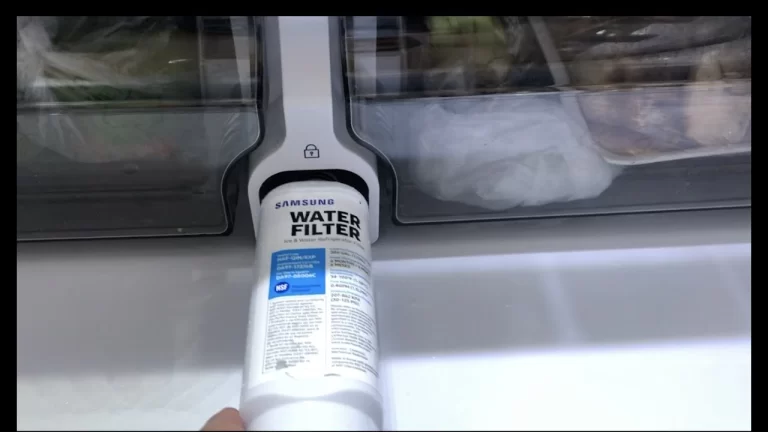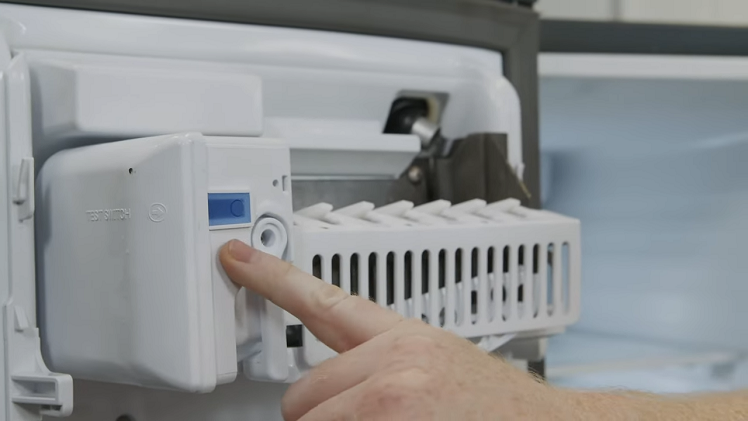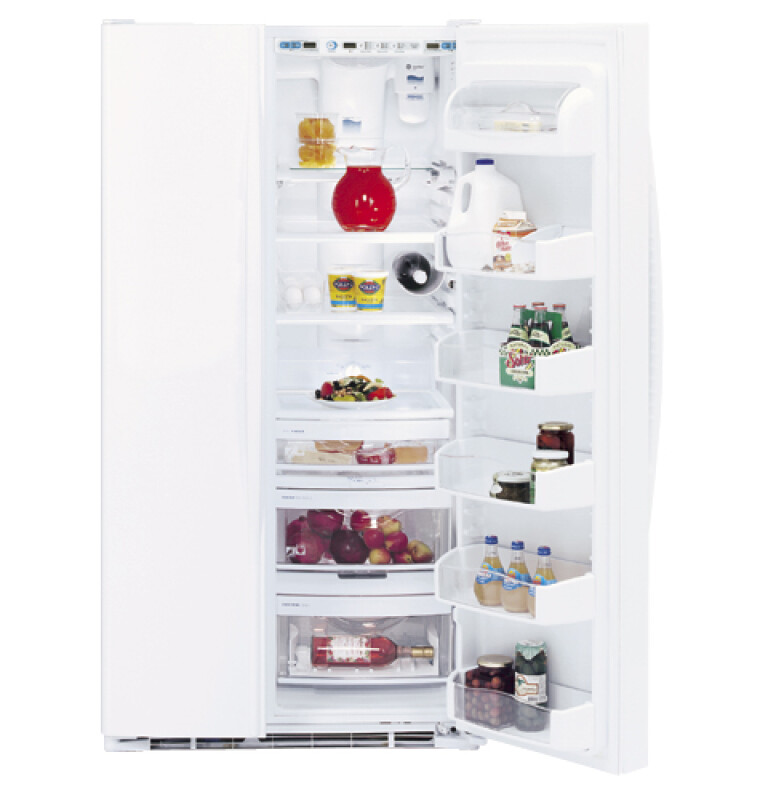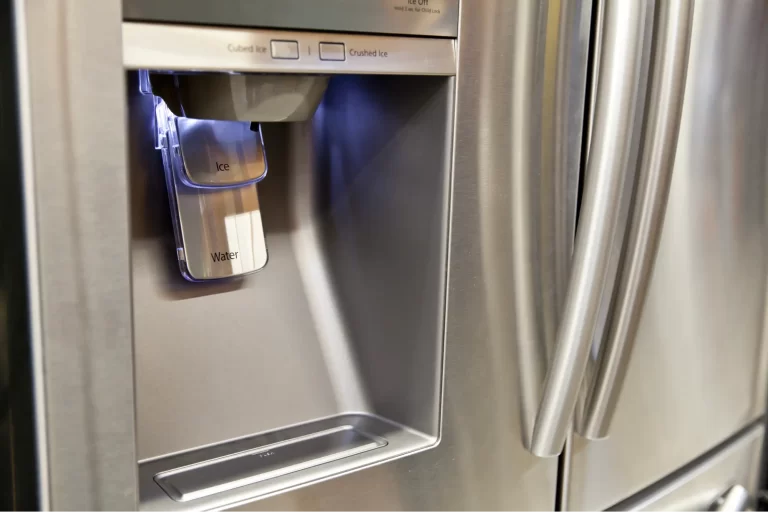Ever find yourself perplexed when your Samsung refrigerator water dispenser stops working, even after a filter change? You’re not alone. This common issue has multiple causes – from intricate filter issues to overlooked settings or component faults. Dive into this guide to troubleshoot and restore your water dispenser’s functionality, ensuring you never have to miss out on that refreshing, post-workout glass of water again.
If your Samsung refrigerator’s water dispenser is not working, there are a few possible causes. Check the water supply line for any kinks or blockages, ensure the water filter is clean and properly installed, and verify that the dispenser control board is functioning correctly.
Quick Solutions for Resolving Samsung Refrigerator Water Dispenser Issues After Filter Replacement
| Issue | Symptom | Fix |
| 1. Authenticity of the Filter | Poor fit or inadequate water flow | Purchase a genuine Samsung water filter from authorized sources |
| 2. Installation Errors | Leaks or blockages | Follow the installation instructions correctly and ensure a proper seal |
| 3. Filter Compatibility | Poor fit or incorrect installation | Use the correct filter model recommended for your specific refrigerator |
| 4. Defective New Filter | Water not flowing through the filter properly | Inspect the new filter for any visible damages and replace if defective |
| 5. Control Panel Lock | Water dispenser is disabled | Consult the user manual to disable the control panel lock feature |
| 6. Freezing Issues | Water lines or reservoir freezing | Adjust the freezer temperature to recommended levels or allow the lines to thaw naturally |
| 7. Water Supply Interruptions | No water flow or weak water flow | Check the water supply line, valve, and remove any blockages or kinks |
| 8. Air in the Water Line | No water flow or sputtering water | Flush the water line by running water through the dispenser to remove trapped air |
| 9. Low Water Pressure | Weak or no water flow | Check the water pressure using a gauge and address any issues with the home’s plumbing system |
| 10. Faulty Water Inlet Valve | No water flow through the dispenser | Test the water inlet valve using a multimeter and replace if defective |
| 11. Clogged Filter | Weak water flow or particles in water | Flush the water lines after filter replacement to clear out any clogs or particles |
| 12. Damaged Dispenser Switch | No response when pressing the dispenser lever | Test the dispenser switch using a multimeter and replace if faulty |
| 13. Misaligned or Faulty Door Switch | Water dispenser not working when the door is closed | Check the alignment of the door switch and replace if necessary |
| 14. Faulty Dispenser Control Board | Water dispenser not functioning | Consult a professional technician for diagnosis and potential replacement of the control board |
| 15. Filter Head Issues | Water not flowing through the filter properly | Inspect the filter head for damages and consider replacing it with professional assistance |
Why is Your Water Dispenser Essential?

Health Benefits of Filtered Water:
Filtered water is not just a luxury; it’s a health necessity. It reduces the presence of contaminants, chlorine, and other harmful substances, providing you with cleaner and safer water to drink.
Convenience in Daily Life:
Having cold water on tap saves time, and who doesn’t love the convenience of ice-cold water without the hassle of filling ice trays or waiting for the kettle to boil?
Economic and Environmental Advantages:
A built-in water dispenser can also save you money in the long run by reducing the need for bottled water. This is not just good for your wallet, but also for the environment by cutting down on plastic waste.
Understanding the Samsung Refrigerator Water Dispenser

Ensuring the quality and safety of the water dispensed from your Samsung refrigerator is paramount for your health and the longevity of your appliance. The role of the refrigerator’s water filter in achieving this cannot be overemphasized. Here, we dive into the reasons why replacing the water filter is critical, how it influences the water dispenser’s performance, and the indicators that signal when a replacement is due.
Essential for Clean and Healthy Water
The primary role of the water filter in your Samsung refrigerator is to purify the water by removing various contaminants, including chemicals, particulates, and microorganisms. Over time, the filter media becomes saturated with these contaminants. A worn-out filter not only reduces the efficiency but may also allow harmful substances to pass through. This can adversely affect the taste and safety of the water, posing potential health risks.
Prolonging Appliance Lifespan
Besides ensuring the quality of the water, a fresh filter plays an integral role in preserving the life of your refrigerator. A clogged filter forces the appliance to work harder, which can put a strain on the system. This may lead to premature wear and tear or even a breakdown. Regular filter replacements ensure smooth operation and decrease the chances of costly repairs.
Enhancing Dispenser Performance
A clogged or degraded filter can significantly impede the flow of water through the dispenser. This may result in a weakened stream or even a complete halt in dispensing. By maintaining a clean filter, you ensure an unobstructed flow and consistent pressure, which translates to optimal performance of the water dispenser.
Indicators for Filter Replacement
Samsung refrigerators are equipped with intelligent systems that help monitor the filter’s condition. Generally, a filter should be replaced every six months, but this might vary based on usage and water quality.
- Color-Coded Alert System: Samsung refrigerators typically have a filter indicator light that changes color to signify the filter status. A blue or green light indicates that the filter is in good condition, an orange light suggests that a replacement will soon be necessary, while a red light signals that it is time to replace the filter.
- Change in Water Taste or Smell: If you notice an alteration in the taste or smell of the dispensed water, it may be a sign that the filter is no longer effectively removing contaminants.
- Reduced Water Flow: A decrease in the water dispenser’s flow rate can indicate a clogged filter that needs replacement.
15 Key Reasons Your Samsung Refrigerator’s Water Dispenser Isn’t Functioning Post-Filter Replacement
1. Authenticity of the Filter
Issue
Utilizing a genuine filter is vital to the proper functioning of your Samsung refrigerator’s water dispenser. Counterfeit or non-genuine filters may not conform to Samsung’s quality and design standards, which can result in poor fit and inadequate water flow or filtration. Additionally, using counterfeit filters can sometimes void your warranty.
Solution
Ensure you are purchasing a genuine Samsung water filter. Check the packaging for Samsung branding and security labels. Compare the model number on the filter to the one recommended in your refrigerator’s manual. To avoid counterfeits, purchase filters from reputable retailers, Samsung’s official website, or authorized dealers.
2. Installation Errors
Issue
Proper installation is critical for the water filter to function optimally. If the filter is incorrectly installed, it might not be seated correctly, which can lead to leaks or blockages. The control panel could sense an improperly installed filter and disable the water dispenser as a precaution.
Solution
Ensure that you follow the installation instructions specified in your Samsung refrigerator’s manual. Make sure the filter is aligned properly and firmly seated in its housing. Pay attention to any clicks that indicate the filter is locked into place. Double-check for any loose parts and ensure that the housing is properly sealed.
3. Filter Compatibility
Issue
Samsung produces a variety of water filters for their range of refrigerators. Each filter is designed to fit specific refrigerator models. Installing an incompatible filter may result in a poor fit and subsequent water dispenser issues.
Solution
Before purchasing a replacement filter, check your refrigerator’s manual for the exact filter model you should use. Additionally, you can check the model number on the old filter or look up the required filter using your refrigerator’s model number on the Samsung website.
4. Defective New Filter
Issue
It’s possible that the new filter might not have been installed correctly. This could be due to improper alignment or not securing it into place. A filter that’s not properly installed can cause the water dispenser to not function correctly.
Solution
To ensure that the new filter is installed correctly, follow these steps:
- Review the Installation Guide: Consult the refrigerator’s manual or the installation guide that came with the filter. This will provide specific instructions on how to properly install the filter for your model.
- Remove and Reinstall the Filter: Turn off the water supply to the refrigerator. Then, remove the filter and inspect it for any visible damages or defects. Reinsert the filter according to the installation guide, making sure it is properly aligned and securely in place.
- Turn the Water Supply Back On: Once the filter is reinstalled, turn the water supply back on and run the water dispenser for a few minutes to check if it’s functioning properly.
- Reset Filter Indicator: After replacing the filter, make sure to reset the filter indicator on the refrigerator. This is usually done by pressing and holding a specific button on the control panel.
5. Control Panel Lock
Issue
Modern Samsung refrigerators come equipped with digital control panels that often have a lock feature. This is particularly helpful for households with children, as it prevents accidental changes to the refrigerator settings. If the control panel is locked, it can disable the water dispenser.
Solution
Consult the refrigerator’s user manual or control panel for instructions on disabling the lock feature. Typically, this involves holding down a specific button for several seconds.
6. Freezing Issues
Issue
If your refrigerator is set to an excessively low temperature, the water in the lines or reservoir may freeze, which prevents it from being dispensed. This is more common in refrigerators that are set to temperatures below the recommended range.
Solution
Check your refrigerator’s temperature settings. For optimal performance, the freezer should be set at 0°F (-18°C) and the refrigerator at 37°F (3°C). If the water lines are frozen, you may need to allow them to thaw. This can be done by either raising the temperature or unplugging the refrigerator to allow it to warm up.
7. Water Supply Interruptions
Issue:
When your Samsung refrigerator water dispenser isn’t working after changing the filter, it’s crucial to consider whether there is an adequate water supply reaching the refrigerator. The water supply line might be kinked, the valve might not be fully open, or there could be a clog somewhere in the supply line.
Solution:
To address issues with the water supply, follow these steps:
- Check the Water Supply Valve: Ensure that the water supply valve, usually located behind or beneath the refrigerator, is fully open.
- Inspect the Water Line: Check the water supply line for any kinks or bends that might be restricting water flow. Straighten the line if necessary.
- Check for Clogs: If the water supply is still not adequate, there might be a clog in the supply line. You can detach the line from both ends and run water through it (using a garden hose or sink) to ensure it’s clear.
- Water Pressure: Lastly, check if the water pressure is sufficient. For the water dispenser to work effectively, the water pressure should typically be between 20-120 psi. You can use a water pressure gauge to measure this.
8. Air in the Water Line
Explanation:
After replacing the water filter in your Samsung refrigerator, air can get trapped in the water line. This is a common occurrence and can prevent water from flowing through the dispenser properly. Trapped air can create a blockage or cause the water to sputter out.
Solution:
To resolve this issue, you need to flush the air out of the water line:
Run the Water Dispenser: Place a large container under the water dispenser and keep the dispenser running. This might take a few minutes, but the pressure of the water should eventually force the air out of the line.
Reset the System: If running the water dispenser doesn’t seem to be effective, try resetting the refrigerator by unplugging it for a minute and then plugging it back in. This can sometimes help to reset any sensors that might be preventing the water from flowing properly.
Inspect for Air Leaks: If you still don’t have a steady stream of water, check the water line for leaks. A small air leak can cause air to enter the system. Make sure all connections are secure.
9. Low Water Pressure
Issue
The water dispenser requires a certain level of water pressure to function properly. If the pressure is too low, it may not have enough force to push the water through the filter and out of the dispenser.
Solution
Check the water pressure in the supply line using a water pressure gauge. If it’s below 20 psi, you might need to look into ways to increase the pressure. This could involve checking for any blockages in your home’s plumbing or consulting a plumber for professional advice.
10. Faulty Water Inlet Valve
Issue
The water inlet valve controls the flow of water from the supply line to your refrigerator’s water dispenser. If this valve is malfunctioning or defective, it may not open sufficiently to allow water to flow through.
Solution
With the refrigerator unplugged, locate the water inlet valve (usually at the back). Use a multimeter to test the valve for continuity. If the valve lacks continuity, it’s defective and should be replaced. If you’re not comfortable doing this yourself, consider hiring a professional appliance repair technician.
11. Clogged Filter
Issue
Over time, the water filter can become clogged with particles and contaminants. When you replace the filter, it’s also possible that some of these particles are released into the water lines, causing a blockage.
Solution
It is advisable to flush the water lines after replacing the filter. Use a large container to dispense about 3-4 gallons of water through the dispenser. This will help to clear out any particles or air that may be trapped in the lines.
12. Damaged Dispenser Switch
Issue
The dispenser switch is what signals the refrigerator to dispense water when the lever is pressed. If this switch is damaged, the refrigerator won’t receive the signal to dispense water.
Solution
A multimeter can be used to check the dispenser switch for continuity. If it shows no continuity, the switch is faulty and needs replacement. This task can be complex, so employing the services of a qualified technician is recommended.
13. Misaligned or Faulty Door Switch
Issue
Some refrigerators have a door switch that disables the water dispenser when the door is open. If this switch is faulty or misaligned, it may think the door is open even when it’s closed.
Solution
Check the door switch’s alignment and ensure it is being pressed when the door is closed. Use a multimeter to test it for continuity. Replace the switch if it’s faulty.
14. Faulty Dispenser Control Board
Issue:
The dispenser switch is a component that triggers the water dispenser when pressed. If this switch is malfunctioning, the water dispenser will not work despite having a new filter.
Solution:
To troubleshoot and resolve issues with a faulty dispenser switch, you can follow these steps:
- Check for Obvious Damage: Inspect the area around the dispenser switch for any visible damage or debris that may be causing the switch to stick or not function properly.
- Test the Switch: Use a multimeter to test the dispenser switch for continuity. This will tell you if there is an electrical current passing through the switch when it is activated.
- Replace if Necessary: If the test shows that there is no continuity, it means the switch is faulty. You will need to replace it. Refer to your refrigerator’s manual for guidance on how to replace the dispenser switch or consider contacting a professional.
15. Filter Head Issues
Issue
The filter head, which houses the filter, has valves that control water flow through the filter. If these valves are damaged, it might cause water to not flow through properly.
Solution
Inspect the filter head for any visible damages. If you suspect an issue with the filter head, consider replacing it. Given that this can be a complicated task, hiring a professional appliance repair technician is recommended.
Other Common Issues and DIY Solutions
While replacing the filter is a common remedy to problems with your Samsung refrigerator’s water dispenser, it’s crucial to recognize that there are other issues that can also hinder its functionality. In this section, we will delve into several common problems and provide DIY solutions that can save you both time and potentially costly service fees.
1. Clogged Water Line
Sometimes, the water line leading to the dispenser gets clogged, which prevents the water from flowing efficiently.
Solution:
- Disconnect the water line from the back of the refrigerator.
- Blow air through it (using an air compressor or by blowing into it) to check if it is clogged.
- If it is, you can try to flush it out with warm water and vinegar, or you may need to replace the water line if it’s severely clogged.
2. Door Seal Issues
The door seal may not be closing properly, causing cold air to escape and affecting the temperature regulation which might lead to water line freezing.
Solution:
- Inspect the door seal for any signs of wear or damage.
- Clean the seal and the area it comes into contact with.
- If the seal is damaged, it may need to be replaced.
3. Defective Dispenser Switch
The dispenser switch, which activates the water dispenser when the lever is pressed, can become faulty over time.
Solution:
- Use a multimeter to test the switch for continuity.
- If it is defective, you will need to replace the dispenser switch.
4. Low Household Water Pressure
Issue:
If the water pressure in your house is low, it can affect the performance of your Samsung refrigerator’s water dispenser. Insufficient water pressure may result in a weak or inconsistent flow of water from the dispenser, or it may not dispense any water at all.
Solution:
To address low household water pressure, follow these steps:
- Check Other Faucets: Start by checking other faucets in your house to see if they also have low water pressure. If multiple faucets are experiencing low pressure, the issue may lie with your home’s overall water supply.
- Inspect Water Supply Valve: Locate the water supply valve connected to your refrigerator and ensure it is fully open. If it’s partially closed, turn it clockwise to open it completely. Sometimes, the valve may have been accidentally turned off or partially closed, causing low water pressure.
- Check for Kinks or Blockages: Inspect the water supply line behind the refrigerator for any kinks or blockages. Straighten any kinks and remove any debris or sediment that may be obstructing the water flow. This can improve the water pressure to the dispenser.
- Contact a Plumber: If you’ve checked other faucets and they have normal water pressure, but the refrigerator’s water dispenser still has low pressure, it may be necessary to contact a plumber. A professional can assess your home’s water supply system and identify any underlying issues causing the low pressure. They will have the expertise and equipment to resolve the problem.
- Consider Installing a Pressure Booster: In some cases, if the overall water pressure in your house is consistently low, you may want to consider installing a pressure booster system. This device increases the water pressure throughout your home, ensuring an adequate supply of water to all fixtures, including your refrigerator’s water dispenser. Consult with a plumber to determine if this is a viable solution for your specific situation.
5. Faulty Dispenser Control Board
The dispenser control board governs most of the functions of the dispenser. If it’s malfunctioning, the water dispenser might not work properly.
Solution:
- Check if other parts of the dispenser are working (like the ice dispenser).
- If only the water dispenser is not working, it may indicate a control board problem.
- In this case, replacing the dispenser control board is the best solution.
6. Water Line Frozen Inside the Door
Issue:
If the water dispenser isn’t working, it’s possible that the water line inside the refrigerator has frozen. This is especially likely if the refrigerator’s temperature settings are too low. When the water line freezes, it can prevent water from flowing through it.
Solution:
Here’s how you can deal with a frozen water line:
Check the Temperature Settings: Check the temperature settings of your refrigerator and freezer. Make sure they are set to the recommended levels. Typically, the refrigerator should be between 35-38°F (1.7-3.3°C) and the freezer should be at 0°F (-18°C).
Defrost the Water Line: If you suspect the water line is frozen, you can try defrosting it. Unplug the refrigerator and leave the doors open for a few hours to allow it to thaw.
Check for Blockages: Sometimes, the line can freeze if there is a blockage that’s restricting water flow. Check the line for any blockages and remove them if found.
Prevent Future Freezing: To prevent the water line from freezing in the future, avoid setting the refrigerator or freezer to temperatures that are too low. Also, make sure the doors are sealing properly to keep the cold air in.
7. Faulty Main Control Board
Sometimes, the main control board of the refrigerator may cause the water dispenser not to work.
Solution:
This is often the last component to check as it’s not a common issue.
If none of the other solutions have resolved the issue, it’s possible that the main control board is faulty and needs replacing.
By addressing these common issues with DIY solutions, you can maintain the efficiency and performance of your Samsung refrigerator’s water dispenser. However, if you’re unsure or the problem seems too complex, it’s always best to consult with a professional technician for assistance. This not only ensures the issue is properly diagnosed but also prevents any accidental damage to the appliance.
Situations When DIY is Not Recommended
While DIY troubleshooting can be effective in many cases, there are situations when it’s best to seek the assistance of a professional technician. Here are some scenarios where attempting a DIY fix may not be advisable:
- Electrical Issues: If you suspect that the problem with your Samsung refrigerator’s water dispenser is related to electrical issues, it’s important to prioritize safety and avoid attempting a DIY fix. Working with electrical components without the necessary knowledge and tools can be dangerous and increase the risk of electric shock or other hazards.
Why Call a Professional: A certified technician will have the expertise and equipment to safely diagnose and repair any electrical issues. They can ensure that all electrical connections and components are handled correctly, minimizing the risk of electrical accidents or further damage to the refrigerator.
- Refrigerant Leaks: If your refrigerator is not cooling properly and you suspect a refrigerant leak, it is not recommended to handle this as a DIY project. Refrigerants can be harmful to your health and the environment, and proper handling is crucial.
Why Call a Professional: Licensed professionals are trained to handle refrigerants safely. They have the knowledge to locate and repair the leak, as well as properly recharge the refrigerant, ensuring the refrigerator operates efficiently and safely.
- Complex Mechanical Failures: If your refrigerator is experiencing complex mechanical problems, such as issues with the compressor or the water valve system, these repairs typically require specialized knowledge and tools.
Why Call a Professional: A technician with experience in refrigerator repair will have the expertise to diagnose and repair complex mechanical issues. They can provide valuable insights into whether it is more cost-effective to repair or replace certain components, ensuring the best outcome for your refrigerator.
- Water Dispenser Continues to Malfunction: If you have attempted basic troubleshooting steps and your Samsung refrigerator’s water dispenser is still not functioning properly, it may indicate a more serious underlying issue.
Why Call a Professional: A professional technician can conduct a comprehensive assessment of the refrigerator, pinpoint the exact cause of the malfunction, and offer the most effective solution. They have access to specialized diagnostic tools and technical knowledge to resolve complex problems.
- Warranty Concerns: If your Samsung refrigerator is still under warranty, attempting DIY repairs could potentially void the warranty coverage.
Why Call a Professional: Many manufacturers’ warranties require that repairs be conducted by authorized professionals. By using a certified technician, you ensure that the repairs are compliant with the warranty terms, protecting your investment in the appliance.
- Lack of Proper Tools and Parts: Certain repairs may require specialized tools and genuine replacement parts. If you do not have access to the necessary tools or genuine parts, attempting a DIY repair could potentially cause further damage or result in an ineffective fix.
Why Call a Professional: Professionals come equipped with the required tools and have access to genuine parts. They can ensure that the repair is carried out effectively and with the right components, maximizing the chances of a successful outcome.
FAQs
What Steps Can Be Taken to Ensure the Water Filter is Properly Installed in a Samsung Refrigerator?
To ensure that the water filter in your Samsung refrigerator is properly installed, first check the user manual for specific instructions for your model. Generally, you should ensure that the filter is compatible with your fridge, insert it into the designated slot, and turn it clockwise until it locks into place. Make sure it is securely in position and run water through the dispenser for a few minutes to flush the system. Lastly, reset the filter indicator light by pressing the appropriate buttons on the control panel.
What are the Signs That Indicate It’s Time to Replace the Water Filter in My Samsung Refrigerator?
There are several signs that indicate it’s time to replace your Samsung refrigerator’s water filter. These include a change in the taste or odor of the water, a decrease in the water flow rate from the dispenser, and the filter indicator light turning red. It’s recommended to replace the water filter every 6 months or as advised by the manufacturer.
How Can I Verify the Authenticity of a Samsung Refrigerator Water Filter?
To verify the authenticity of a Samsung refrigerator water filter, first, check for an authentication sticker on the packaging. Genuine filters should have a sticker that, when attached to the accompanying magnet, will reveal green stripes if authentic. Additionally, make sure that the filter has the Samsung branding and purchase from reputable sources or directly from Samsung.
What Should I Do If There’s a Leak from My Samsung Refrigerator’s Water Dispenser?
If there’s a leak from your Samsung refrigerator’s water dispenser, first, make sure the water filter is properly installed and not loose. Check the water lines for any signs of damage or kinks. If the leak persists, it could be due to a faulty valve or seals. In such cases, it’s recommended to contact a professional technician for repair.
Why is My Samsung Refrigerator Dispenser’s Water Pressure Low, and How Can I Fix It?
Low water pressure in your Samsung refrigerator dispenser can be due to several reasons including a clogged water filter, a kinked water line, a closed supply valve, or low pressure in the main water supply. Start by checking the filter and replace it if necessary. Ensure that the water lines are not kinked and that the supply valve is fully open. If these steps don’t resolve the issue, it’s wise to check the water pressure in your main supply or consult a professional.
Conclusion
In conclusion, addressing common issues with your Samsung refrigerator’s water dispenser through DIY troubleshooting can save time and money. Remember to seek professional assistance for complex problems or safety concerns. Regular maintenance and following manufacturer guidelines ensure a properly functioning water dispenser. Thanks for reading, and feel free to share your experiences or questions in the comments below. Cheers to a well-functioning water dispenser in your Samsung refrigerator!

